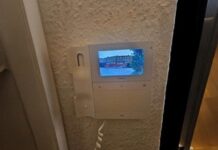
Koning Willem I College in north-east Brabant, Netherlands, offers courses to around 18,000 students taking 250 courses at its 16 locations. A new location on Onderwijsboulevard in ‘s-Hertogenbosch was recently designed to be a model modern educational institution — and this included for its access control.
The imposing new building has modern rooms which provide opportunities for consultation, collaboration in small and large groups, presentations and individual work. Access to these spaces required a flexible and modern locking solution — ideally with as few keys as possible. Employees and students must feel welcome and safe. Dependable security was needed for all kinds of valuable learning materials and sensitive information.
“Easy integration with the existing access control system without additional software,” was the goal, according to Alex te Pas, functional manager of facilities management information systems.
“Within our organisation, we want to phase out the use of keys,” he says. “Because when employees left, we noticed that people often forgot to turn in keys or tokens. In the event of an audit, we then have a problem.”
The college chose Aperio locks which are easy to integrate wirelessly with their existing Nedap AEOS access control system. No additional software is needed: wireless Aperio locks communicate via Aperio Hubs which handle secure, real-time communication between locks and the AEOS system. This way, college security staff have full control over access and can quickly revoke anyone’s access rights.
Because Aperio devices run on batteries, rather than mains power, there was no need to make any major adjustments to the doors. This saves both time and cost during installation. The ongoing cost of using these battery-powered locks is also much lower than for equivalent wired electronic locks, which require an ‘always on’ connection to the power grid to maintain secure status.
The college chose the Aperio E100 Escutcheon to secure doors throughout the building. The E100 offers a convenient combination of free exit from the inside with automatic locking on closure from outside. It comes in a variety of specifications to fit different door security levels or everyday usage, including a version with PIN pad which adds another level of control. With the additional PIN code, the risk of unauthorised access via a found or stolen pass is minimised.
“We wanted to provide our technical rooms with 2-factor authentication. So here we chose Aperio locks with PIN code capability,” adds te Pas. Nedap’s versatile AEOS access control system integrates seamlessly with a broad range of Aperio devices. End-users can get even more out of an existing Nedap AEOS system by integrating Aperio cylinders, escutcheons, handles and more, online and/or offline, giving security managers control over traffic to and through more areas at their premises.
Nedap integration supports multiple devices from the Aperio range, including the award-winning wireless handle (H100), escutcheon (E100), cylinder (C100) and security lock (L100). Aperio devices are available for almost any interior or exterior door, including wooden and glass doors, as well as fire doors. Online integration with AEOS can use different interfaces (RS485 / IP), connecting lock and system via hubs which control up to 16 locks each.
A full set of powerful functions and events is made available for any Aperio device within the AEOS interface, including door or battery status and tamper detection. AEOS software manages everything, eliminating unproductive tasks including any need to duplicate data entry — saving time and extending control without hassle for building users or administrators.











